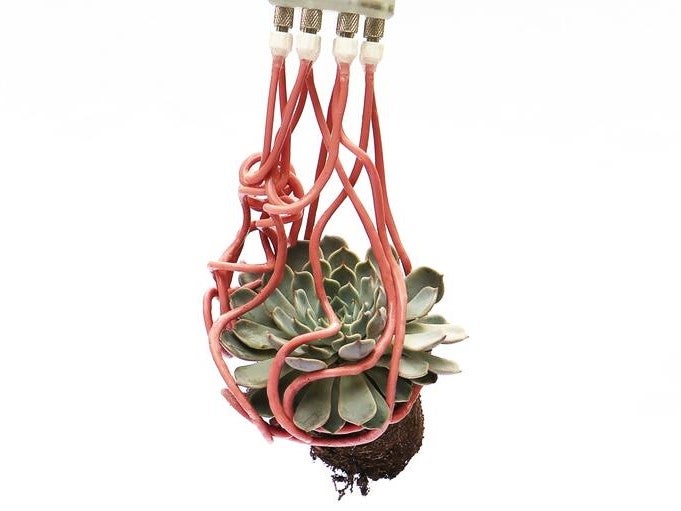Tentacle robot can grasp extremely fragile objects
Robotic gripper could be used to pick up anything from plants to ‘priceless artefacts from a sunken ship’

Engineers have invented a rubber-tentacled robot inspired by jellyfish that is capable of gently grasping fragile objects in ways never before thought possible.
A team from Harvard University claims the soft robotic gripper could be used to pick up anything from plants to “priceless artefacts from a sunken ship”.
The technology mimics the mechanics of curly hair, using rubber tubes that have one side that is thicker than the other. This means that when the tube is pressurised, it curls like straightened hair on a rainy day.
This approach overcomes the issues faced by robotic grippers when handling delicate or awkwardly shaped objects.
Rather than relying on complex machine learning algorithms or skillful operators like other robots, the tentacle gripper uses simple inflation to gently wrap around items.
“With this research, we wanted to reimagine how we interact with objects,” said Kaitlyn Becker, a postdoctoral fellow at Harvard’s John A Paulson School of Engineering and Applied Sciences.
“By taking advantage of the natural compliance of soft robotics and enhancing it with a compliant structure, we designed a gripper that is greater than the sum of its parts and a grasping strategy that can adapt to a range of complex objects with minimal planning and perception.”
The novel technique expands the range of what’s possible to pick up with robotic grippers, according to the scientists who built it.
“This new approach to robotic grasping complements existing solutions by replacing simple, traditional grippers that require complex control strategies with extremely compliant, and morphologically complex filaments that can operate with very simple control,” said Professor Robert Wood, who helped lead the robot’s development.
A paper detailing the robot, titled ‘Active entanglement enables stochastic, topological grasping’, was published in the scientific journal Proceedings of the National Academy of Sciences (PNAS).
Join our commenting forum
Join thought-provoking conversations, follow other Independent readers and see their replies
Comments
Bookmark popover
Removed from bookmarks